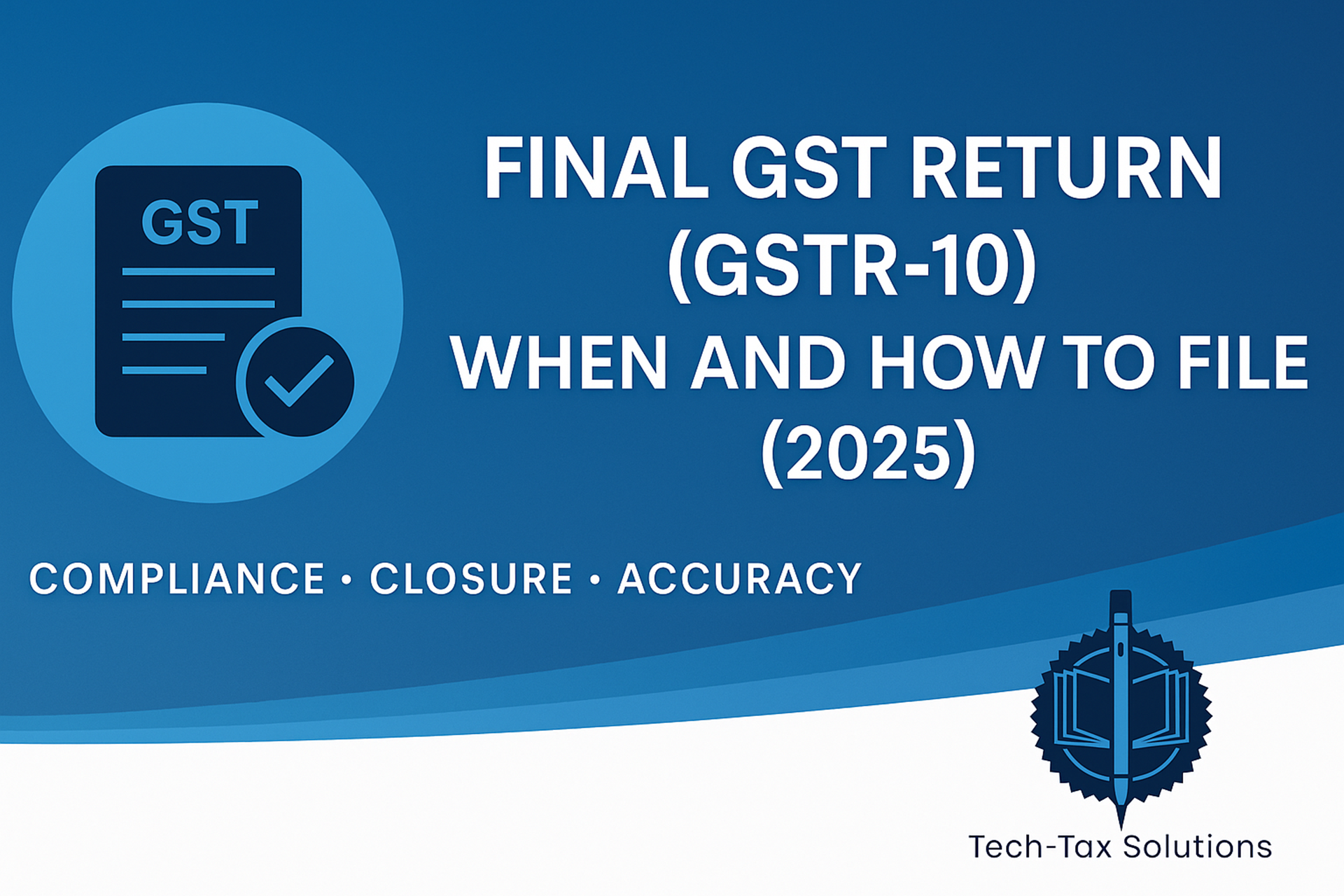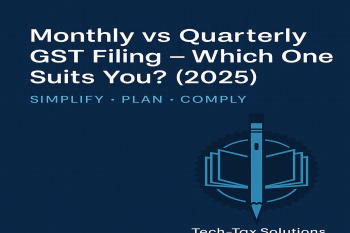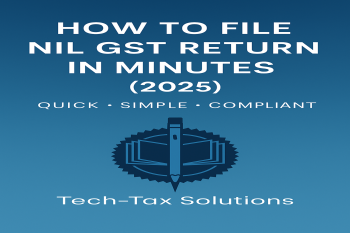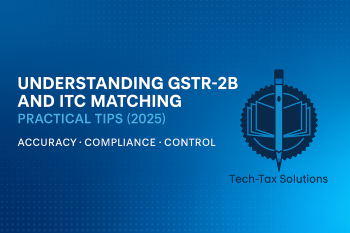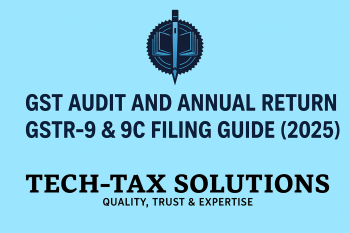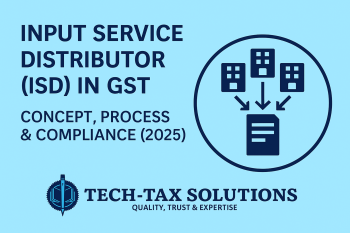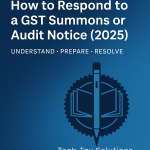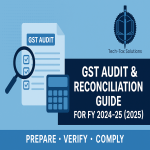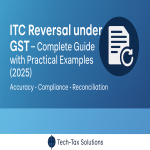🔹 Introduction
When a taxpayer decides to close or cancel their GST registration — whether due to business closure, turnover reduction, or restructuring — filing the Final GST Return (GSTR-10) becomes mandatory.
The GSTR-10 ensures that all liabilities, credits, and supplies are properly reported before the registration is permanently deactivated.
Failure to file this return can lead to penalties, notices, and complications in future registrations.
This article explains when and how to file GSTR-10, its due date, the step-by-step filing process, and key compliance considerations as per the latest provisions updated till FY 2025–26.
🔹 Legal Framework
The filing of GSTR-10 is governed by the following provisions under the CGST Act and Rules:
-
Section 45 of the CGST Act, 2017 – Obligation to furnish a final return.
-
Rule 81 of the CGST Rules, 2017 – Prescribes the form and manner for filing GSTR-10.
-
Section 47(1) – Penalty for delay in filing return.
-
CBIC Notifications & Circulars – Various updates on portal enhancements and due date relaxations.
📘 Purpose:
To ensure that all pending liabilities are cleared, and all stock-related tax obligations are properly accounted for before the GST registration is closed.
🔹 When is GSTR-10 Required to be Filed?
GSTR-10 must be filed only once, when:
-
GST registration has been surrendered voluntarily, or
-
GST registration has been cancelled by the proper officer under the GST Act.
💡 Note:
GSTR-10 is not required when registration is cancelled temporarily or when migrated taxpayers never activated their GSTIN.
📅 Due Date:
Within three months from the date of:
-
Cancellation of registration, or
-
Date of order of cancellation,
whichever is later.
🔹 Step-by-Step Process to File GSTR-10
Follow this simple procedure to file your Final GST Return online:
✅ Step 1: Login to GST Portal
Go to www.gst.gov.in → Login using your credentials.
✅ Step 2: Navigate to GSTR-10
Dashboard → Services → Returns → Final Return (GSTR-10).
✅ Step 3: Enter Basic Details
Pre-filled information will appear — such as GSTIN, legal name, and address.
Verify and confirm.
✅ Step 4: Provide Cancellation Details
Enter:
-
Effective date of cancellation
-
Reference number of cancellation order
-
Date of cancellation order
✅ Step 5: Declare Stock Held
Mention details of inputs, semi-finished goods, and capital goods held on the cancellation date.
The system will auto-calculate tax liability on such closing stock.
✅ Step 6: Pay Outstanding Tax Liability
-
Use the Electronic Cash Ledger to pay any pending tax, interest, or late fees.
-
Ensure all dues are cleared before submission.
✅ Step 7: Preview & File Return
Preview the summary → Verify using DSC or EVC → Submit.
Download acknowledgment (ARN) for records.
🔹 Practical Example
Example:
M/s ABC Traders cancelled their registration effective 10 March 2025.
The cancellation order was issued on 20 March 2025.
Hence, the due date for filing GSTR-10 is 19 June 2025 (within three months from order date).
They must report:
-
Closing stock worth ₹10,00,000 with tax @18% = ₹1,80,000
-
Pay total tax liability of ₹1,80,000 before filing GSTR-10.
🔹 Common Mistakes
-
❌ Ignoring GSTR-10 after cancellation request approval.
-
❌ Missing declaration of stock or underreporting stock values.
-
❌ Filing beyond due date, resulting in ₹200 per day late fee (max ₹10,000).
-
❌ Attempting to claim ITC after registration cancellation.
-
❌ Confusing GSTR-10 with Annual Return (GSTR-9).
🔹 Best Practices
✅ File GSTR-10 immediately after cancellation order to avoid penalties.
✅ Maintain proper inventory and tax computation for closing stock.
✅ Download all return data (GSTR-1, 3B, 2B) before surrendering registration.
✅ Keep ARN acknowledgment for future verification or audits.
✅ Seek professional help if business has mixed taxable and exempt stock.
🔹 FAQs
Q1. Who needs to file GSTR-10?
➡️ Every registered person whose GST registration has been cancelled or surrendered must file GSTR-10.
Q2. What is the due date for filing GSTR-10?
➡️ Within three months from the date of cancellation or date of cancellation order, whichever is later.
Q3. Can GSTR-10 be revised after filing?
➡️ No. Once filed, GSTR-10 cannot be revised. Ensure accuracy before submission.
Q4. What happens if GSTR-10 is not filed?
➡️ The proper officer may issue a notice under Section 46, and you will be liable to pay late fees and penalties.
Q5. How to pay liability under GSTR-10?
➡️ Liabilities can be paid through the Electronic Cash Ledger using the GST portal.
🔹 Conclusion
Filing the Final GST Return (GSTR-10) is an essential closure activity for any business discontinuing under GST.
It ensures that all pending liabilities are settled and prevents future tax notices or compliance issues.
By filing on time and maintaining proper documentation, taxpayers can achieve a smooth exit from the GST system.
📌 For expert assistance in GST cancellation, final return filing, or compliance closure, reach out to Tech-Tax Solutions – Quality, Trust & Expertise in Ghaziabad, Noida & Delhi.
